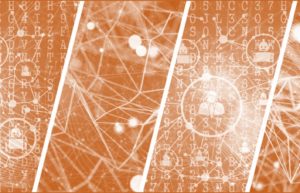
Lawful Interception for IoT at the Network Edge
The increasing popularity of Internet of Things (IoT) applications and smart devices has led to a coexistence between 4G and 5G networks. As a result,
Quantum Computing may enable communications that do not travel across a network in the conventional sense and endanger traditional encryption methods, carrying critical implications for lawful intelligence.
Preventing illicit trafficking is a daunting task for border security agencies. AI-powered Computer Vision and location intelligence enhance security, reduce costs, and close surveillance gaps.
Effective lawful intelligence solutions do more than just ingest and analyze data. They build evidential narratives compelling enough for court that are backed by a fully auditable chain of custody.
Encryption and OTT apps limit the value of lawful eavesdropping tools like wiretaps, but mobile networks offer a powerful engine for new insights: real-time geographical awareness using high-accuracy location.
Lawful interception of voice by LEAs harkens back to a time when unencrypted phone calls over a wireline carrier network defined electronic communication. In the smartphone era, other methods have proliferated.

The increasing popularity of Internet of Things (IoT) applications and smart devices has led to a coexistence between 4G and 5G networks. As a result,

As communication service providers (CSPs) implement sophisticated location technologies to comply with regulatory obligations, many are investigating associated revenue opportunities to help recover costs. Passive

Accurate, immediate, reliable caller-location information is critical for public safety answering points (PSAPs) to guide the response to emergency services calls. While international standards help

Regulators have required geographic redundancy for the network resources operated by communication service providers (CSPs) for some time but meeting this mandate has become more

The evolution of international 5G standards has brought increased privacy and security protections for users and data, which can be at odds with the needs

Communication service providers (CSPs) realize significant agility and cost benefits from cloud and edge deployment models made possible by cloud-native network architectures. Edge computing consumes

In the decades since it was first adopted in Western Europe, 112 has become the most prevalent emergency services number worldwide. While there are significant

The evolution of telecommunication industry standards has been marked by a steady and methodical progression of revision and refinement. The gradual nature of standards development

The transition from one year to the next is a natural time for assessment. At SS8, that appraisal helps illuminate the present state of lawful

As emerging technologies such as the internet of things and autonomous vehicles expand the scope and volume of traffic transmitted over public communications networks, new
THE DATA SILO DILEMMA FOR LAW ENFORCEMENT
How to Ingest, Filter and Query 5G Volumes
Webinar Presented by Kevin McTiernan